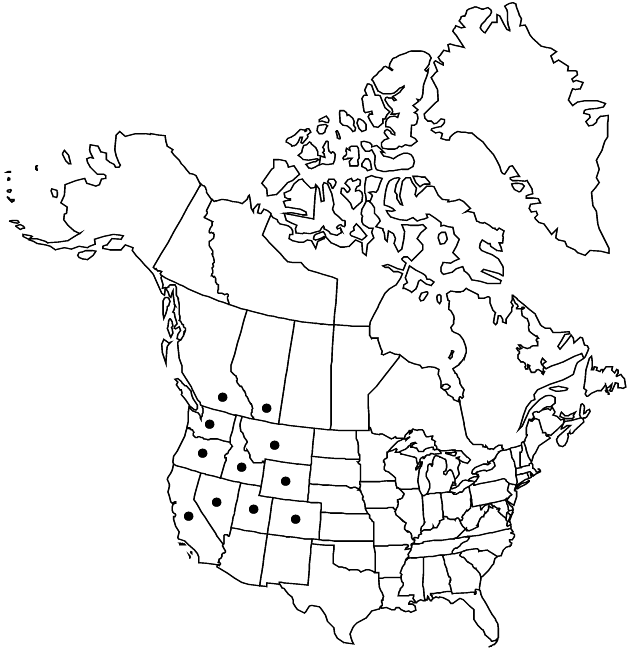Senecio integerrimus var. exaltatus
Leafl. W. Bot. 6: 48. 1950.
IllustratedEndemic
Basionym: Senecio exaltatus Nuttall Trans. Amer. Philos. Soc., n. s. 7: 410. 1841
Synonyms: Senecio dispar A. Nelson Senecio hookeri Torrey & A. Gray Senecio integerrimus var. vaseyi (Greenman) Cronquist Senecio lugens var. exaltatus (Nuttall) D. C. Eaton Senecio perplexus A. Nelson Senecio vaseyi Greenman
Herbage copiously to sparsely arachnose, tomentose, or villous at flowering. Leaves: basal and proximal cauline usually indistinctly petiolate; blades (cauline) mostly elliptic to lanceolate or oblanceolate, sometimes rounded-deltate or suborbiculate. Heads 6–15 (–30+). Phyllaries ± lanceolate, (4–) 5–10 mm, tips black. Ray-florets usually ± 5, sometimes 0; corollas yellow, laminae 6–15 mm.
Phenology: Flowering spring.
Habitat: Open woodlands, sagebrush plains, meadow grasslands from foothills to above timberline
Elevation: 500–3200 m
Distribution

Alta., B.C., Sask., Calif., Colo., Idaho, Mont., Nev., Oreg., Utah, Wash., Wyo.
Discussion
Variety exaltatus is the most widespread and variable variety of the species. Eradiate plants of var. exaltatus have been recognized as var. vaseyi; there appears to be no populational integrity to the eradiate condition.
Selected References
None.
Lower Taxa
None.
... more about "Senecio integerrimus var. exaltatus"
introrse +
connate +
papillate +
truncate-penicillate +
scarious +
hispidulous +
papillate +
corymbiform +
continuous +
nerved +
suborbiculate;rounded-deltate;mostly elliptic;lanceolate or oblanceolate +
winged;nerved;ribbed +
absent +
linear;filiform +
stigmatic +
persistent +
30;80 +
absent +
not 2-lipped +
yellow +
monomorphic +
staminate +
straight +
distinct +
proximal +
1;5 +
bisexual +
dispersed +
singly +
indeterminate +
6;15 +
Present +
surrounding +
turbinate;campanulate +
petiolate +
alternate +
erect;recurved +
deltate +
scarious +
2-carpellate +
inferior +
attached +
anatropous +
persistent +
falling +
tough +
thick +
absent +
connate +
persistent +
distinct +
herbaceous +
falling +
erect +
lanceolate +
subequal +
equal +
Leafl. W. Bot. +
1950 +
pistillate +
absent +
fertile +
epaleate +
foveolate +
flat;convex +
fibrous +
exalbuminous +
modifed +
alternate +
clustered +
erect +
single +
2-branched +
glabrous +
papillate +
Senecio integerrimus var. exaltatus +
Senecio integerrimus +
variety +
campanulate +
equaling +
black +
shorter +
perennial +
